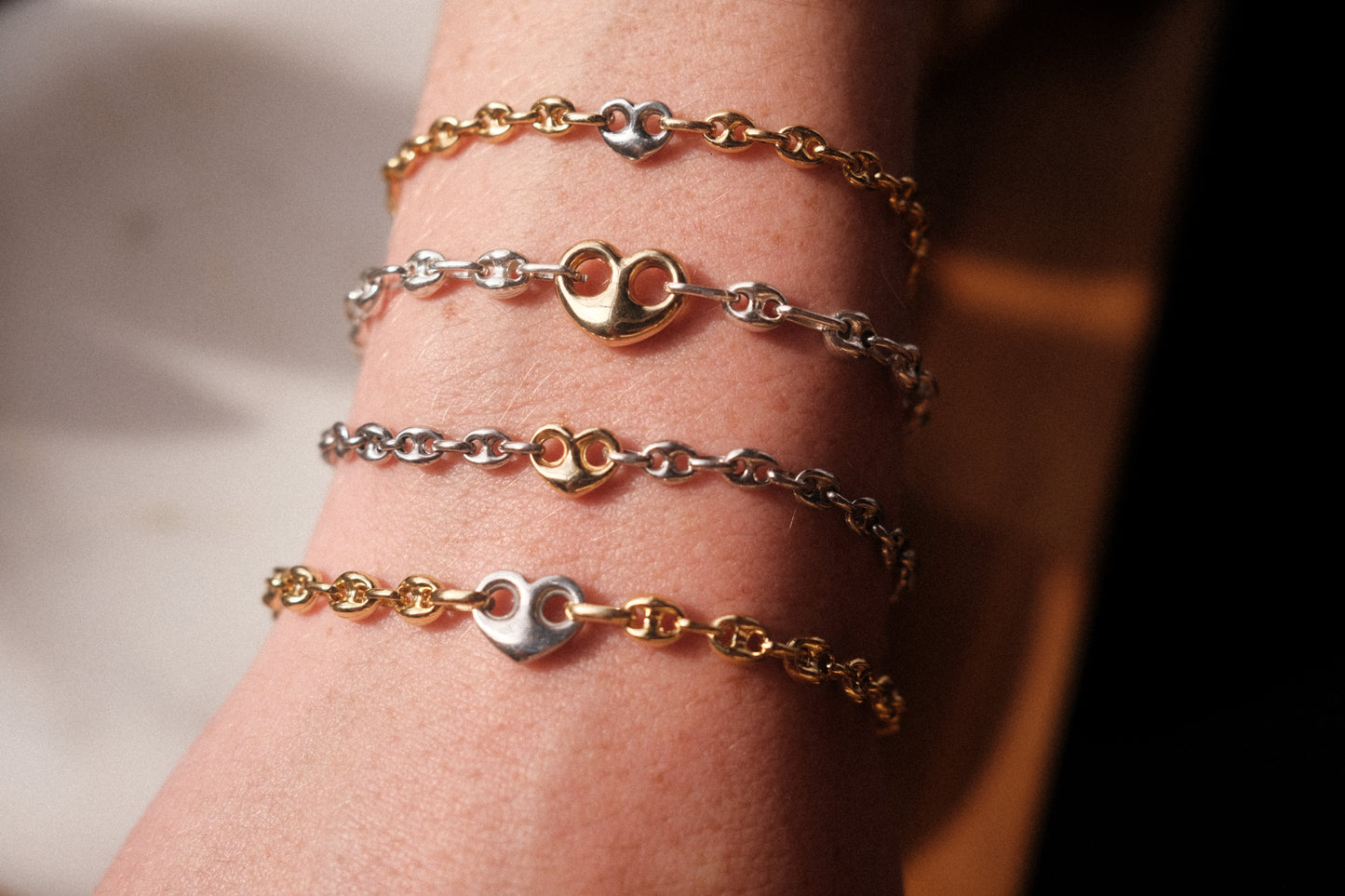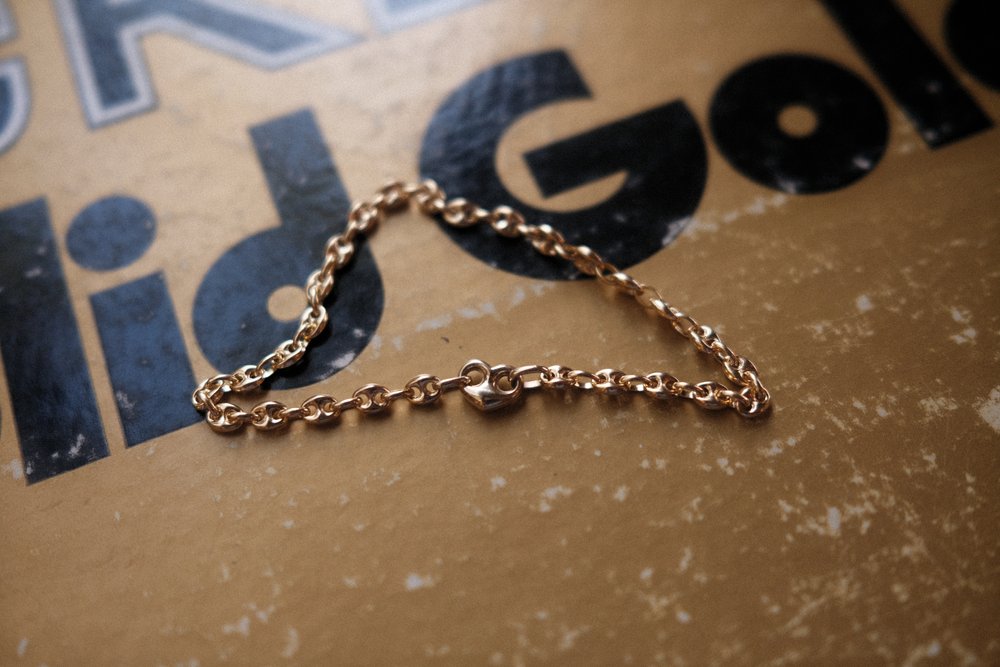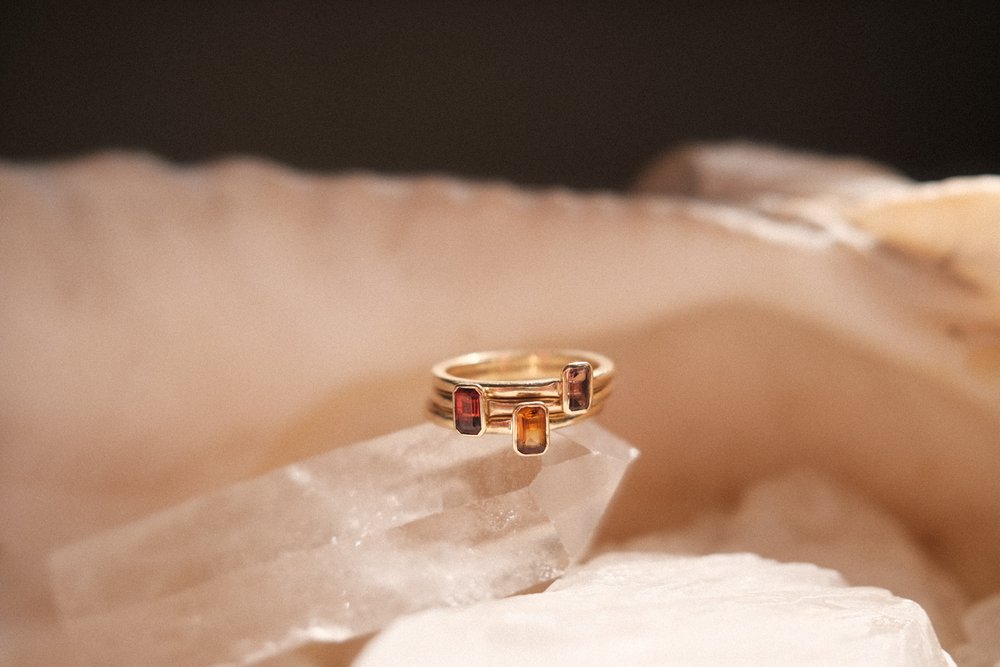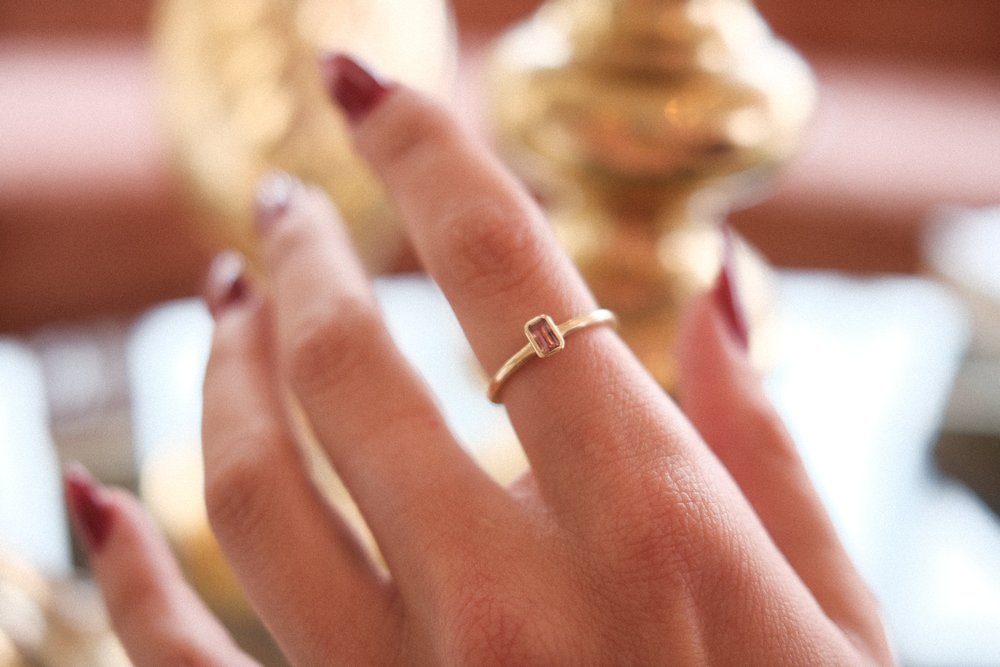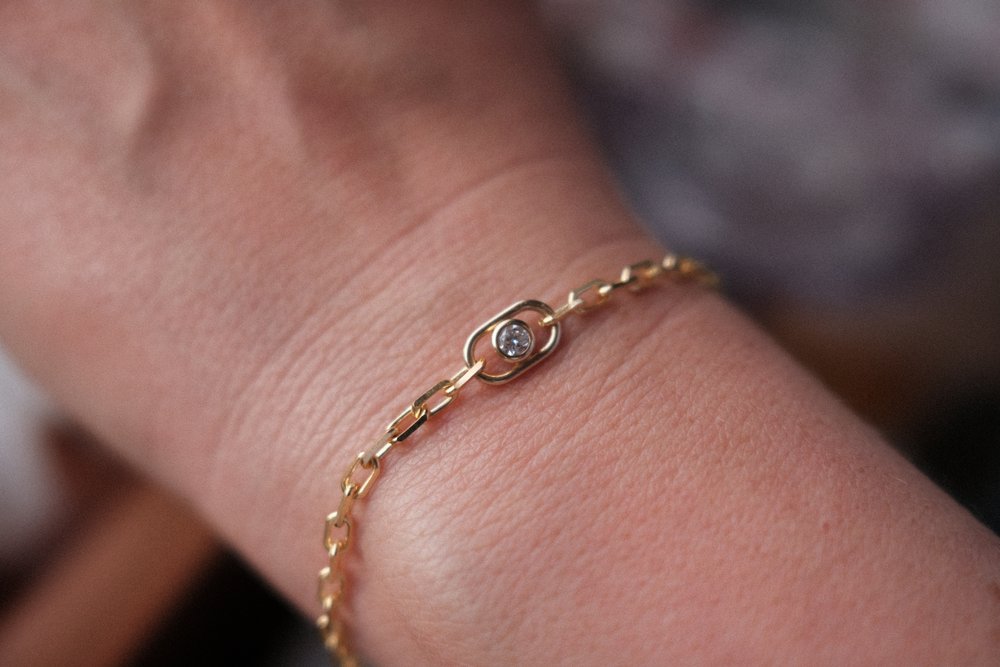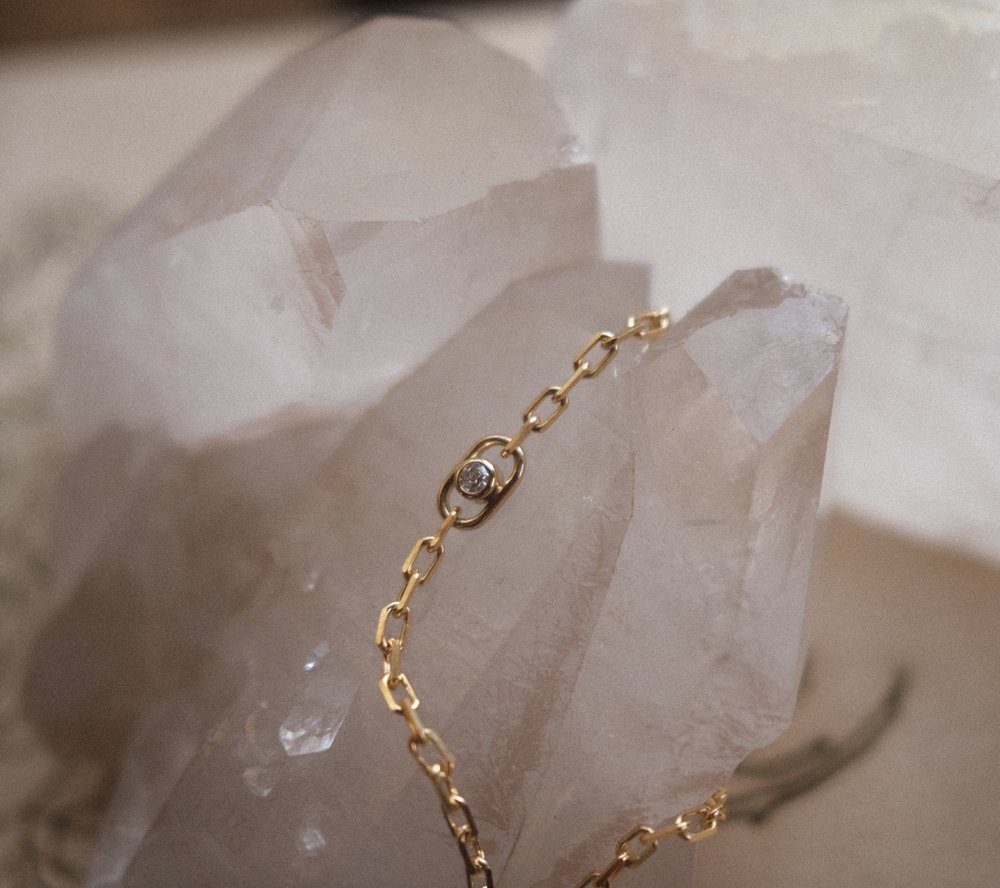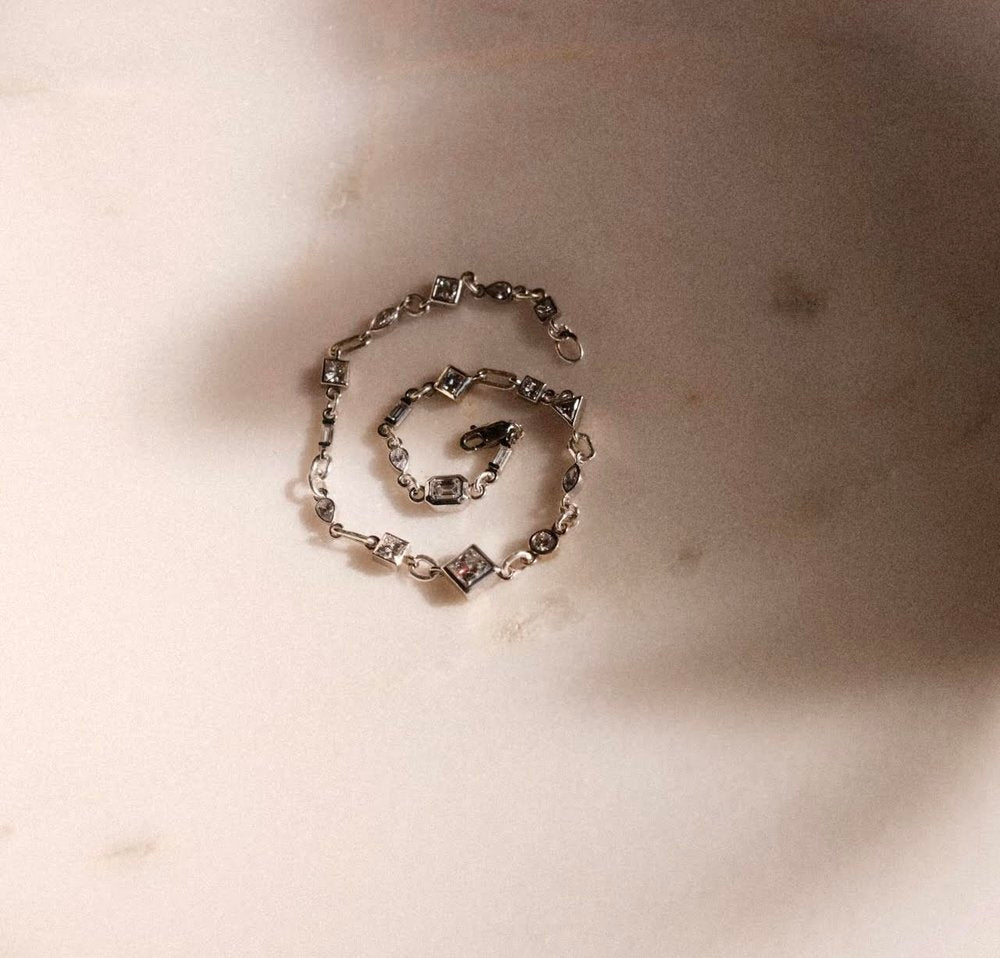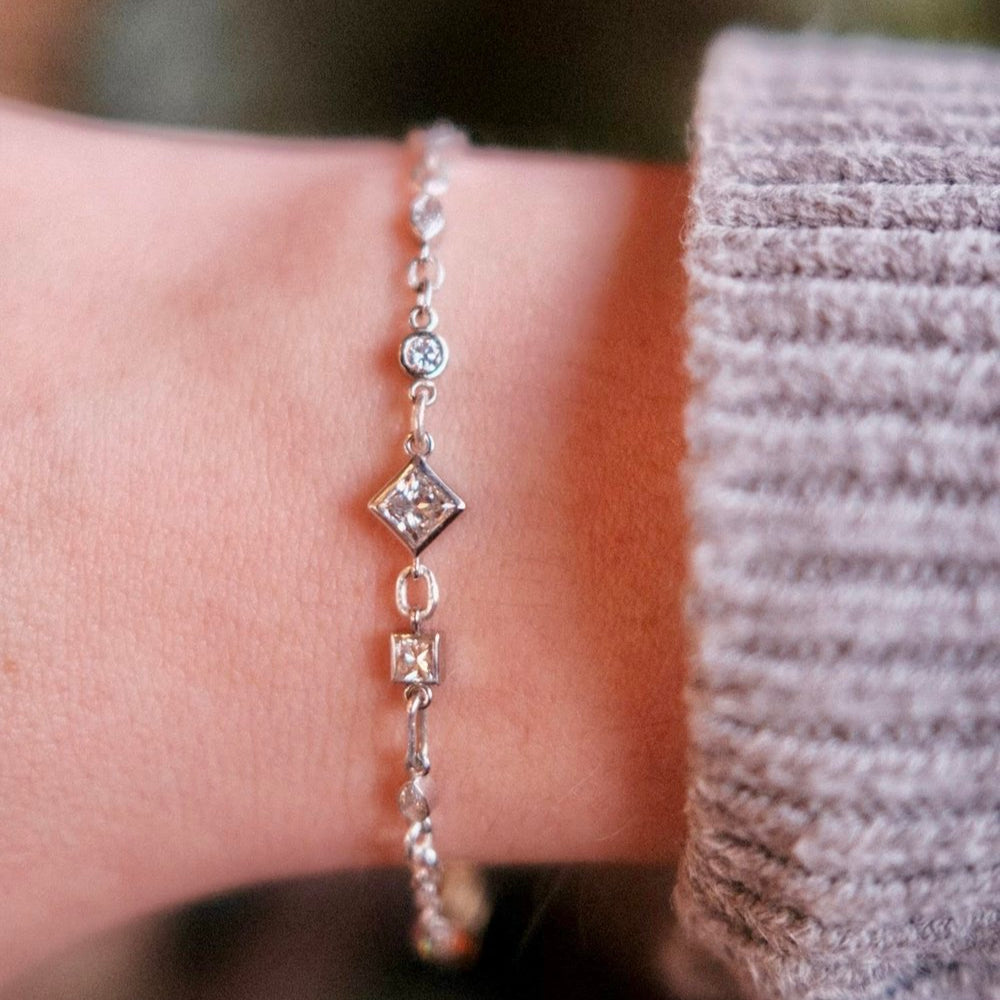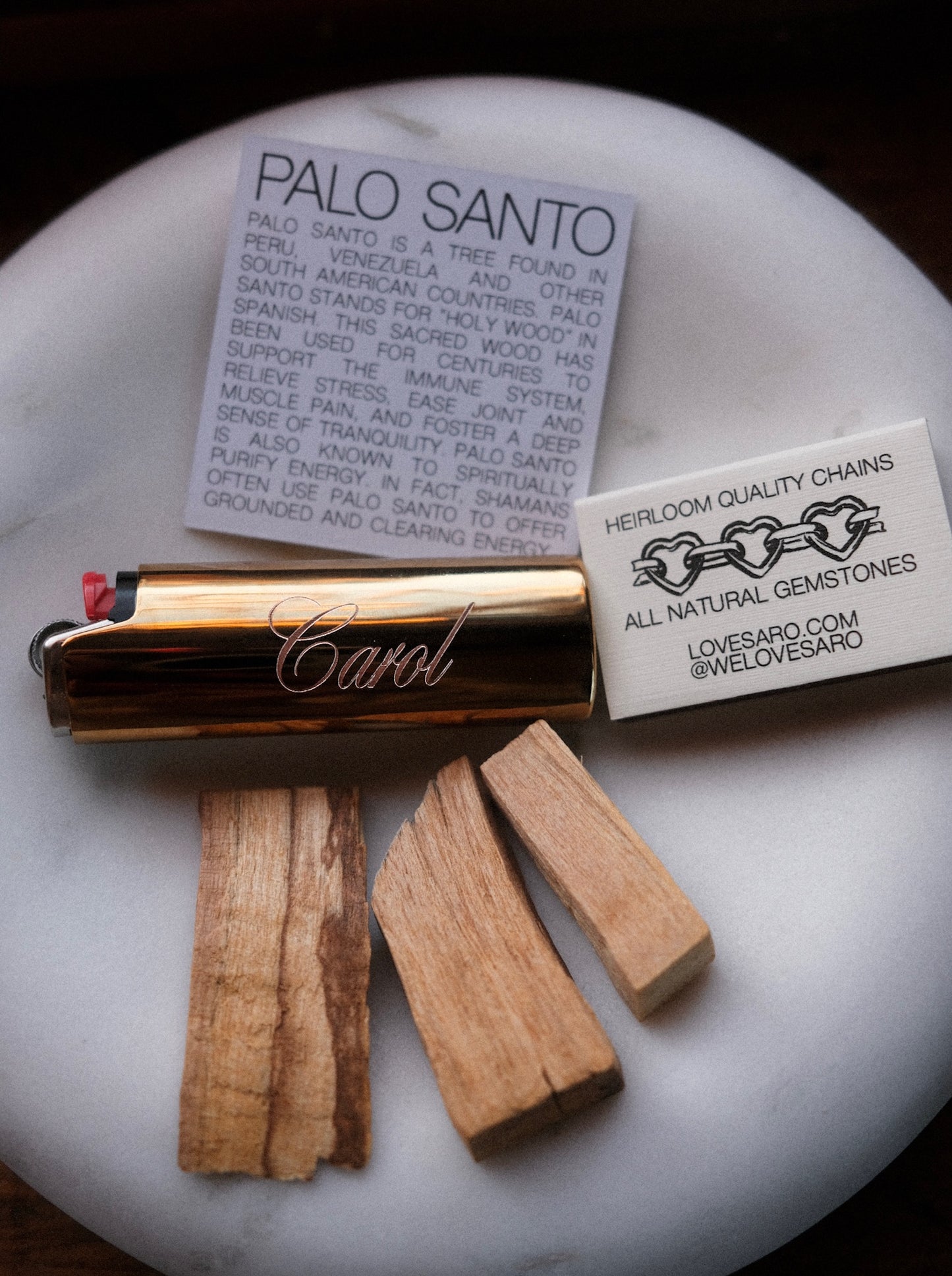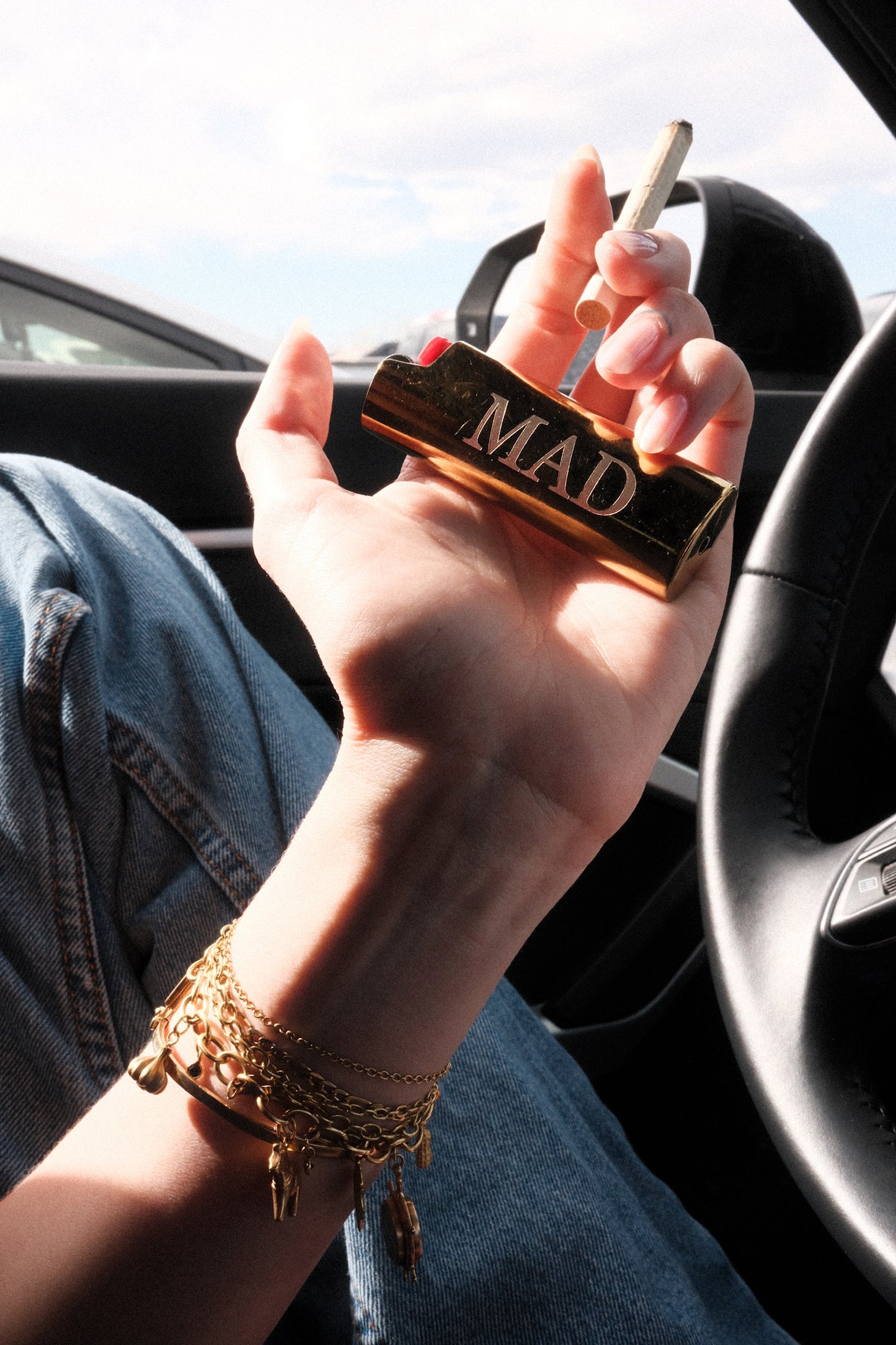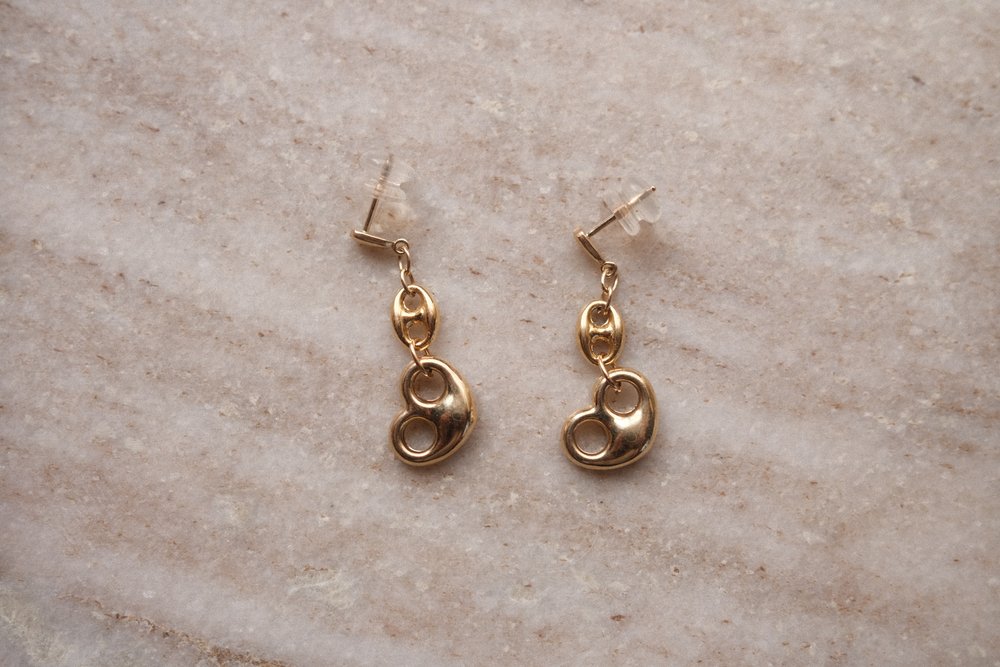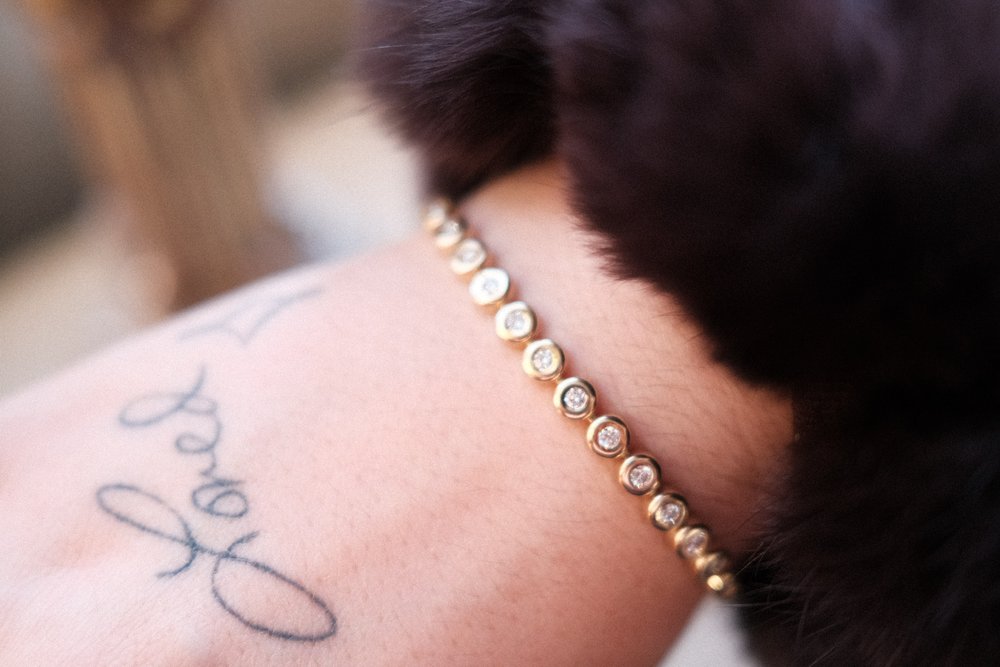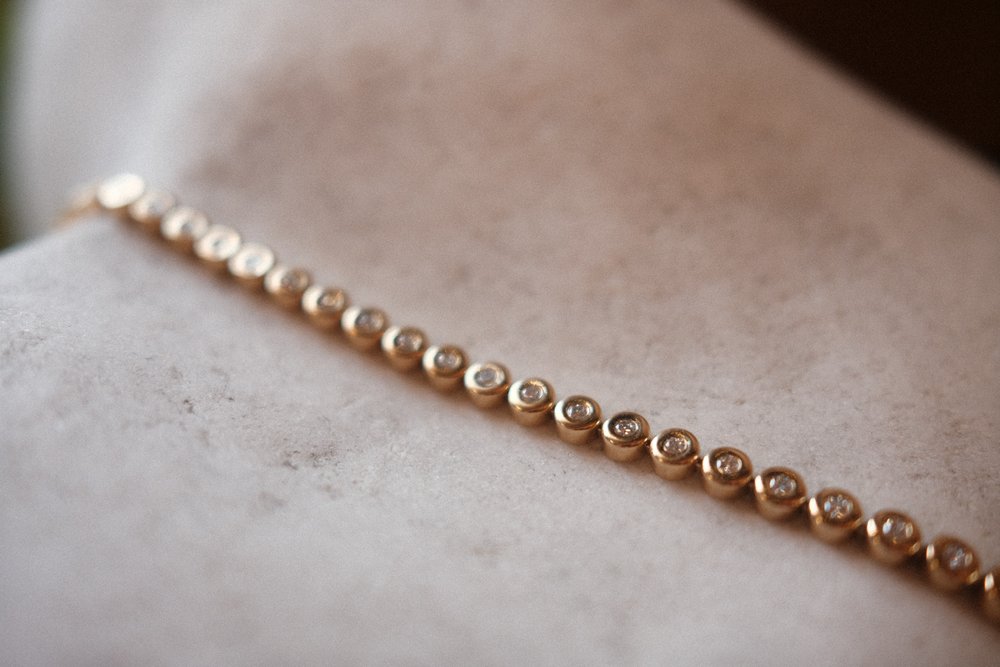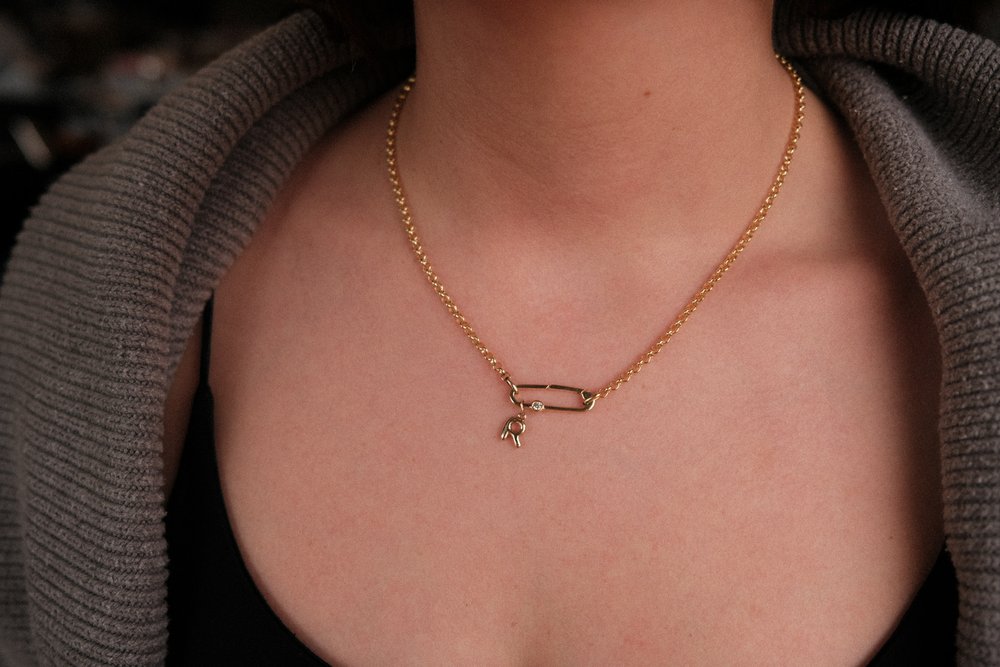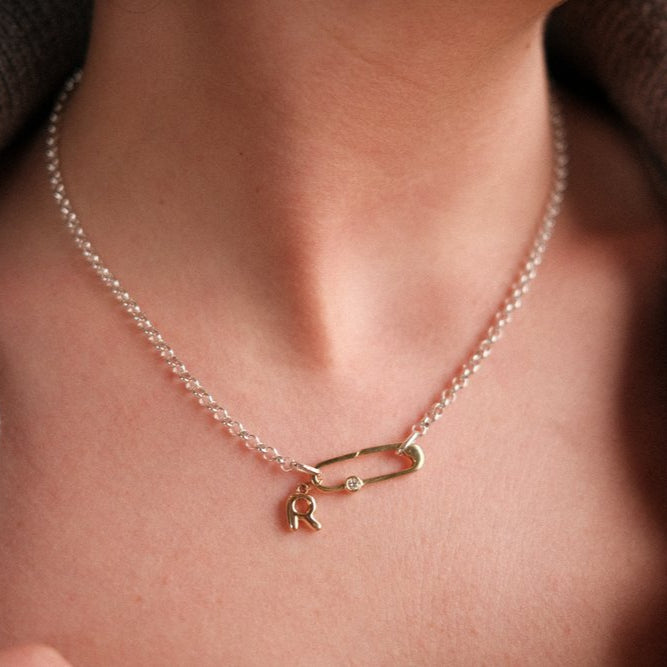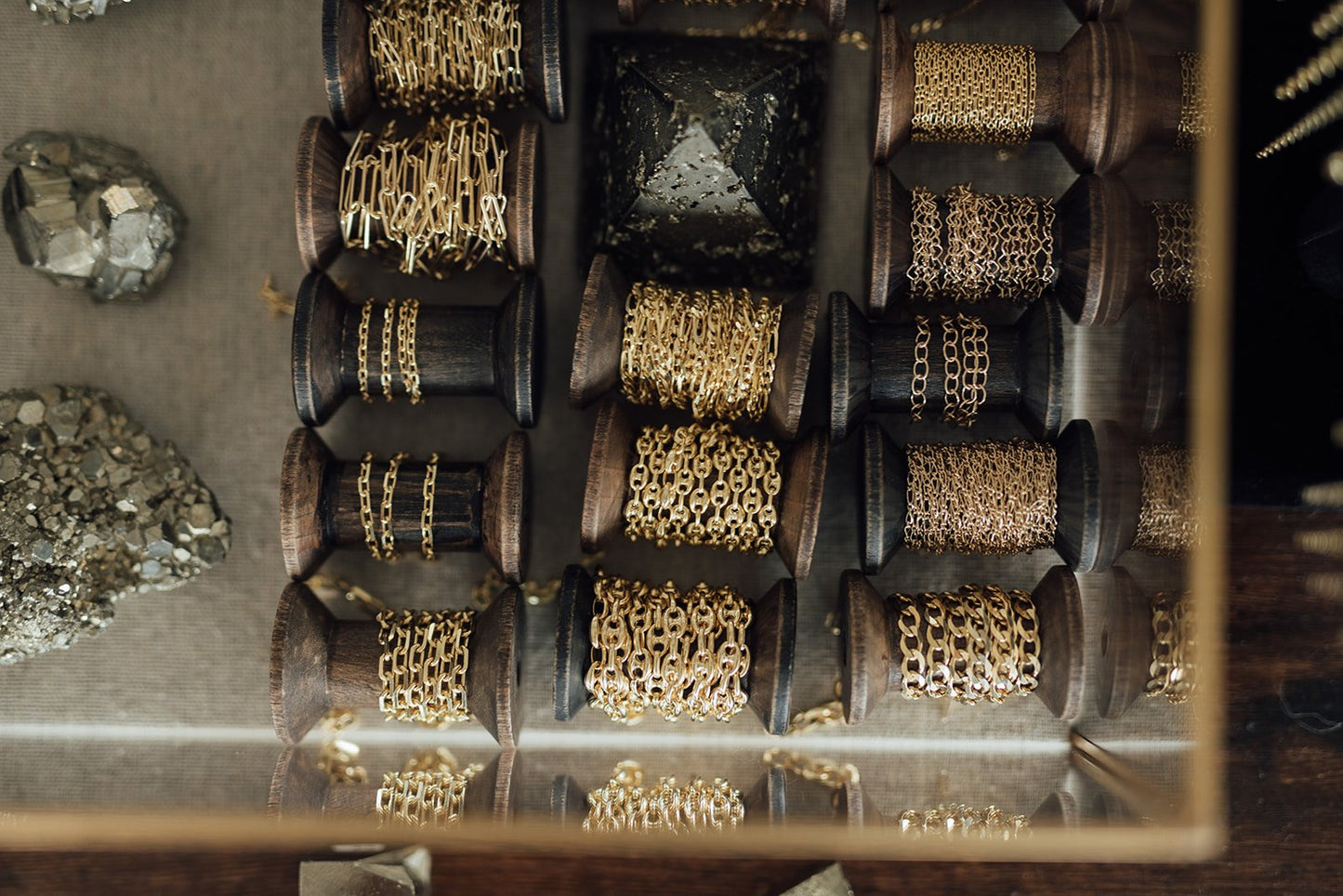
Everything you need to know about metals for fine jewelry
STERLING SILVER
For centuries, Sterling Silver has been valued for its lustrous beauty and versatility, used in jewelry, home décor, and fine dining utensils.
Sterling Silver, or 925 Silver, is made from 92.5% pure silver with added alloys for durability, as pure silver alone is too soft for daily use. This is the purest form of silver used in jewelry and housewares.
Unlike gold, silver can tarnish over time. However, regular wear, like daily showering or stacking bracelets ,can help minimize tarnish. Tarnishing, or oxidation, is primarily caused by exposure to sulfur in moist environments and can also result from contact with oils in moisturizers, perfumes, shampoos, and even natural skin acids.
At Love Saro, our team has worn our silver jewelry everywhere from hot springs, pools, to our favorite hot yoga classes with no tarnishing. We have not personally experienced tarnishing with our products considering our daily wear and care - but everyone is different! Like gold, sterling silver will patina naturally over time. It is a softer metal and therefore will develop character with wear.
CHOOSING STERLING SILVER & 14 SOLID GOLD MEANS CHOOSING JEWELRY MADE TO LAST
“These metals are perfect for daily wear as they are highly performative, durable, comfortable for the most sensitive skin, and most importantly - they age beautifully.” -Sacha Jarmon, Co-founder

GOLD
Solid gold is made to last a lifetime, resistant to tarnish, fading, or wear. Unlike plated jewelry, it won’t need replacing or re-plating, making it a sustainable, forever-worthy investment. It’s a beautiful metal that naturally evolves with daily wear, developing a soft patina that reflects your story. Crafted to evolve with you, and endure for generations, solid gold is a timeless choice for meaningful, lasting adornment.
THE ORIGIN OF “KARAT”
In ancient bazaars, carob seeds balanced scales for measuring gold, inspiring the term “Karat” for gold purity. Fine jewelry karat ratings range from 9k to 24k, denoting the gold percentage in each piece.
WHICH KARAT IS RIGHT FOR YOU?
- 24k: The purest gold (99.99%), with a rich color but very soft, making it impractical for daily wear.
- 18k: Contains 75% gold. Durable yet soft enough to scratch, it’s popular for fine jewelry.
- 14k: Composed of 58% gold, it's the most common karat in the U.S. Its durability and affordability make it ideal for daily wear and active lifestyles. We use 14k gold in most of our jewelry.
- 10k: The most durable, with 41.7% gold, but its higher alloy content may not be hypoallergenic for everyone.
Gold jewelry for daily wear includes alloys like zinc, copper, and silver to enhance durability. Each manufacturer’s alloy mix is proprietary. When buying, note that “solid gold” may be used loosely and sometimes refers only to gold plating. It is important to ask the right questions when purchasing solid gold jewelry.
Fine jewelry is meant to be lived in.
Gold and silver, much like our own vessels, interact with the world around them, preserving the beauty of your creations as precious as the day they were designed.
METAL FAQs
Frequently asked questions
Solid 14k gold is 58.3% gold and 41.7% alloyed metal. 14k gold is solid gold and will not corrode or tarnish like plated or filled gold.
Solid 14k gold is 58.3% gold and 41.7% alloyed metal. 14k gold is solid gold and will not corrode or tarnish like plated or filled gold.
We use solid 14k yellow gold because it provides the most resistance to wear and tear while being hypoallergenic. Unlike plated gold, which is commonly used by permanent jewelers, solid 14k yellow gold will never tarnish. It is the best metal type to truly perform when worn daily, forever!
We use solid 14k yellow gold because it provides the most resistance to wear and tear while being hypoallergenic. Unlike plated gold, which is commonly used by permanent jewelers, solid 14k yellow gold will never tarnish. It is the best metal type to truly perform when worn daily, forever!
14k gold costs more because the material itself is more expensive. The extraction process of gold is extensive and difficult, and it is relatively scarce making it an extremely valuable commodity.
14k gold costs more because the material itself is more expensive. The extraction process of gold is extensive and difficult, and it is relatively scarce making it an extremely valuable commodity.
Solid gold is worth the higher cost because it will never corrode and will always retain its value. Choosing gold means choosing a durable piece of jewelry that will always retain its value and color.
Solid gold is worth the higher cost because it will never corrode and will always retain its value. Choosing gold means choosing a durable piece of jewelry that will always retain its value and color.
Gold requires very little care. If you’d like an extra shine, clean with dish soap and water! A soft brush can be used to get into hard to reach places. That being said, we have not found any additional care of cleaning necessary for our permanent chains outside of regular daily showering/hygiene.
Gold requires very little care. If you’d like an extra shine, clean with dish soap and water! A soft brush can be used to get into hard to reach places. That being said, we have not found any additional care of cleaning necessary for our permanent chains outside of regular daily showering/hygiene.
Sometimes with solid gold we might experience black smudges on our skin - this is due to something called metallic abrasion.
Metallic abrasion occurs when tiny metal particles rub off of your gold ring, necklace, watch or bracelet to form a black substance on your skin. Lotions, oils, perfumes and sweat interacting with the jewelry and your skin can be responsible for the occurrence of metallic abrasion.
These substances can contain compounds (chemical or other) that are harder than precious metals, like solid gold. Metal abrasion occurs when jewelry comes in contact with the hard compounds - causing particles of the metal to rub off. This often looks like black dust and is easily cleaned off with a towelette or soap and water.
Sometimes with solid gold we might experience black smudges on our skin - this is due to something called metallic abrasion.
Metallic abrasion occurs when tiny metal particles rub off of your gold ring, necklace, watch or bracelet to form a black substance on your skin. Lotions, oils, perfumes and sweat interacting with the jewelry and your skin can be responsible for the occurrence of metallic abrasion.
These substances can contain compounds (chemical or other) that are harder than precious metals, like solid gold. Metal abrasion occurs when jewelry comes in contact with the hard compounds - causing particles of the metal to rub off. This often looks like black dust and is easily cleaned off with a towelette or soap and water.
24k is considered the purest amount of gold - at 99.99% gold content. 24k gold produces a rich, buttery yellow color but is extremely, extremely soft and delicate as no other metals are added to it - thus is not suitable for daily wear.
22k is commonly used for statement pieces of jewelry due to its vibrant golden hue. 22k is 91.7% pure gold. Due to the high gold content - 22k is more expensive, and softer than its lower karat counterparts.
18k commonly used in fine jewelry. Its alloy is tested as 75% gold, 18k is durable, but still relatively soft enough to experience scratches from daily wear due to its malleability.
14k is also commonly used in fine jewelry and considered to be 58% pure gold. We use 14k yellow gold in much of our jewelry as we find it is suited best for daily wear and the most active of lifestyles.
10k is considered the most durable - with 41.7% pure gold content. We use 10k for a few of our rings as we value its durability. As 10k as a higher content level of alloyed metals - it is not considered hypoallergenic for everyone.
9k is 37.5% pure gold content. This purity of gold is considered much less hypoallergenic. 9k yellow gold has much duller yellow color than its higher karat counterparts.
24k is considered the purest amount of gold - at 99.99% gold content. 24k gold produces a rich, buttery yellow color but is extremely, extremely soft and delicate as no other metals are added to it - thus is not suitable for daily wear.
22k is commonly used for statement pieces of jewelry due to its vibrant golden hue. 22k is 91.7% pure gold. Due to the high gold content - 22k is more expensive, and softer than its lower karat counterparts.
18k commonly used in fine jewelry. Its alloy is tested as 75% gold, 18k is durable, but still relatively soft enough to experience scratches from daily wear due to its malleability.
14k is also commonly used in fine jewelry and considered to be 58% pure gold. We use 14k yellow gold in much of our jewelry as we find it is suited best for daily wear and the most active of lifestyles.
10k is considered the most durable - with 41.7% pure gold content. We use 10k for a few of our rings as we value its durability. As 10k as a higher content level of alloyed metals - it is not considered hypoallergenic for everyone.
9k is 37.5% pure gold content. This purity of gold is considered much less hypoallergenic. 9k yellow gold has much duller yellow color than its higher karat counterparts.
When worn daily, gold will naturally patina. When gold is worn next to other pieces of gold - the pieces will patina to the same tone over time. Occasionally, we might experience our skin turning black with interaction to pure gold. No need to fret - this residue easily comes off with a quick clean using soap and water or a wet wipe and is very uncommon. This reaction is caused by gold interacting with lotions, oils, moisturizers, etc. It can also be an indicator of low iron levels in the body.
When worn daily, gold will naturally patina. When gold is worn next to other pieces of gold - the pieces will patina to the same tone over time. Occasionally, we might experience our skin turning black with interaction to pure gold. No need to fret - this residue easily comes off with a quick clean using soap and water or a wet wipe and is very uncommon. This reaction is caused by gold interacting with lotions, oils, moisturizers, etc. It can also be an indicator of low iron levels in the body.
925 Sterling Silver is created from 92.5% silver and 7.5% alloyed metals. Pure silver is too soft to be used by itself, therefore other metals are added to harden the material. This is considered the purest form of silver you can find for jewelry and any housewares/items.
925 Sterling Silver is created from 92.5% silver and 7.5% alloyed metals. Pure silver is too soft to be used by itself, therefore other metals are added to harden the material. This is considered the purest form of silver you can find for jewelry and any housewares/items.
We use 925 Sterling Silver as it is durable, hypo-allergenic, cost-effective, and most importantly - ages beautifully.
We use 925 Sterling Silver as it is durable, hypo-allergenic, cost-effective, and most importantly - ages beautifully.
Wearing silver daily can prevent it from experiencing tarnishing as our bodies' natural oils can maintain their brilliance. A jewelry polishing cloth can also provide an efficient and easy way to clean your jewelry. Silver polishing cloths are infused with a specific silver-polishing compound.
Wearing silver daily can prevent it from experiencing tarnishing as our bodies' natural oils can maintain their brilliance. A jewelry polishing cloth can also provide an efficient and easy way to clean your jewelry. Silver polishing cloths are infused with a specific silver-polishing compound.
Unlike gold, silver is not resistant to tarnishing, HOWEVER, when worn every day, specifically with everyday showering and wearing multiple bracelets together, they keep each other nice and bright and avoid tarnishing.
Tarnishing or oxidization occurs when silver interacts with a number of chemicals. Common oils in moisturizers, detergents, shampoos, perfumes, deodorants, and soaps can also cause tarnishing. Our bodies' own acids can also cause tarnishing! The good news is that most silver can be easily cleaned with silver polishing cloth or other at-home, chemical-free remedies.
It is not normal for sterling silver to oxidize intensely to the point of turning suddenly black due to chemical exposure. If this happens to your jewelry, please contact us for help with our at-home remedies. We are always here to help!
Unlike gold, silver is not resistant to tarnishing, HOWEVER, when worn every day, specifically with everyday showering and wearing multiple bracelets together, they keep each other nice and bright and avoid tarnishing.
Tarnishing or oxidization occurs when silver interacts with a number of chemicals. Common oils in moisturizers, detergents, shampoos, perfumes, deodorants, and soaps can also cause tarnishing. Our bodies' own acids can also cause tarnishing! The good news is that most silver can be easily cleaned with silver polishing cloth or other at-home, chemical-free remedies.
It is not normal for sterling silver to oxidize intensely to the point of turning suddenly black due to chemical exposure. If this happens to your jewelry, please contact us for help with our at-home remedies. We are always here to help!
No - 925 Sterling Silver does not contain nickel. A Sterling Silver allergy is very rare, therefore most of the population can wear it with no issue.
No - 925 Sterling Silver does not contain nickel. A Sterling Silver allergy is very rare, therefore most of the population can wear it with no issue.
We choose not to work in plated or filled gold materials as these are not suitable for daily, permanent wear. The process of plating, vermeil, and fill involves adding a layer of gold to a base layer of metal. Over time, the gold layer will wear off, causing the base metal to become exposed and eventually tarnished beyond repair. Additionally, this type of jewelry can be irritating to sensitive skin and also leave unwanted residue on the skin.
We choose not to work in plated or filled gold materials as these are not suitable for daily, permanent wear. The process of plating, vermeil, and fill involves adding a layer of gold to a base layer of metal. Over time, the gold layer will wear off, causing the base metal to become exposed and eventually tarnished beyond repair. Additionally, this type of jewelry can be irritating to sensitive skin and also leave unwanted residue on the skin.
The gold plating or finishing process involves the least amount of gold, therefore resulting in the lowest cost. A low price tag for “gold” jewelry typically indicates that the product is plated. Because the layer of gold is so thin - it quickly wears off - allowing the base metal to tarnish.
The gold plating or finishing process involves the least amount of gold, therefore resulting in the lowest cost. A low price tag for “gold” jewelry typically indicates that the product is plated. Because the layer of gold is so thin - it quickly wears off - allowing the base metal to tarnish.
Gold filled jewelry has the thickest amount of gold applied to a base metal. While the inner material is protected from tarnishing from daily wear, this metal is not considered hypoallergenic, cannot be reused or resized, and is not safe from reaction to harsh chemicals including chlorine.
Gold filled jewelry has the thickest amount of gold applied to a base metal. While the inner material is protected from tarnishing from daily wear, this metal is not considered hypoallergenic, cannot be reused or resized, and is not safe from reaction to harsh chemicals including chlorine.
The process of vermeil involves electroplating a layer of gold to a base of Sterling Silver. The cost is lower, but like plating, wears off in time, beyond repair.
The process of vermeil involves electroplating a layer of gold to a base of Sterling Silver. The cost is lower, but like plating, wears off in time, beyond repair.
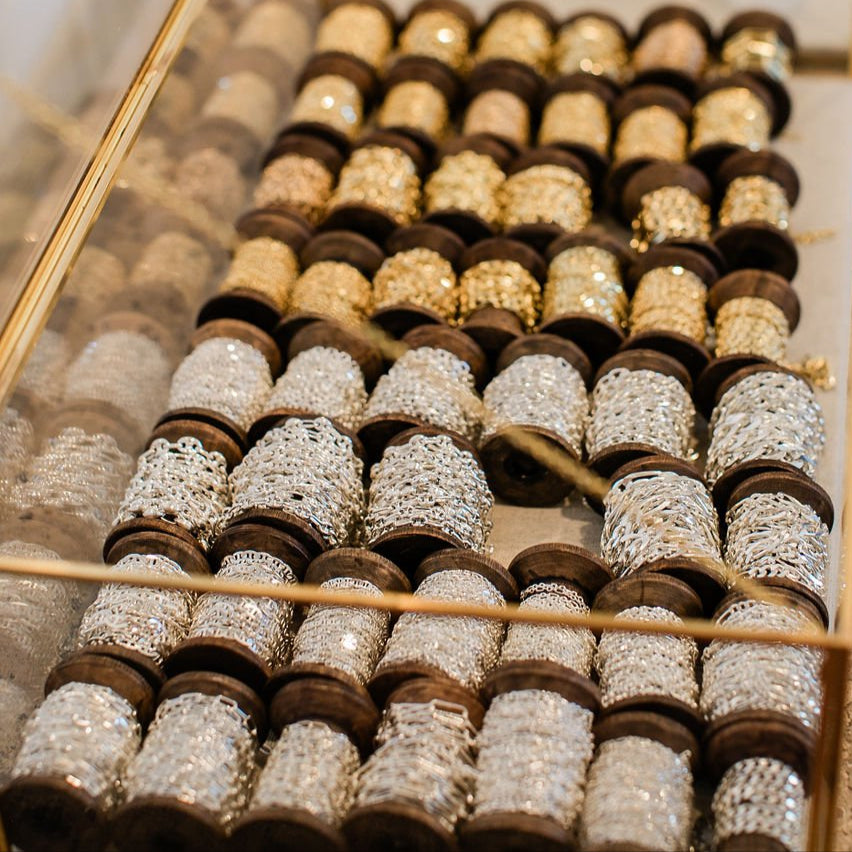
We love the duality of Gold & Silver for its beautiful aesthetic as well as its spiritual significance.
Spiritually, silver is seen as reminiscent of the moon. It can be used as a mirror to the soul. Due to its reflective surface, it is thought to bring reflection to the wearer and to those who view it. The nature of silver is strong yet malleable, versatile and durable - thus it symbolizes subtle strength and endurance. As a metal, silver is associated with sensitivity and emotions, and is used as a tool to bring a sense of balance and calmness.
Spiritually, gold symbolizes the sun. Ancient Egyptians believed that gold was the flesh of Ra - the God of the Sun. Warm in hue, gold is thought to possess a high, vibrant energy. As a metal, it has been long used an a symbol for fortune, achievement, and prosperity.

